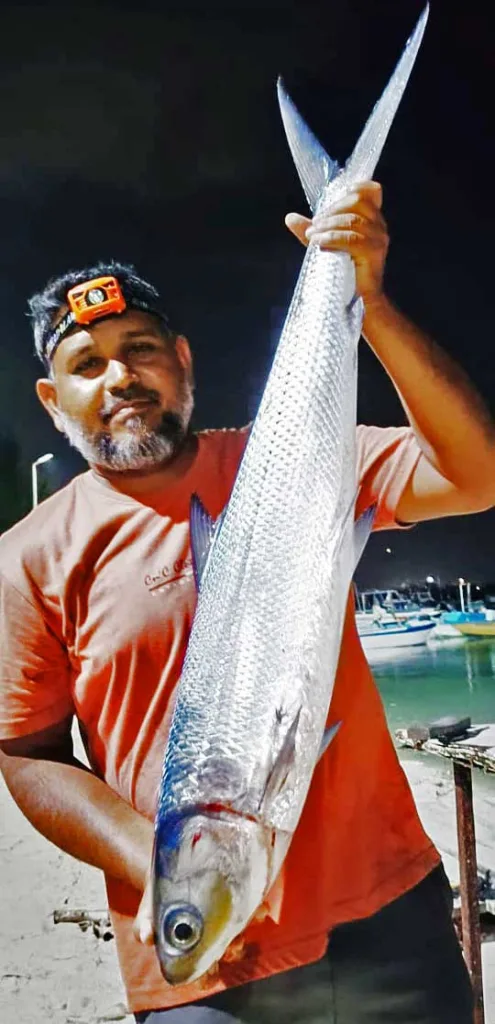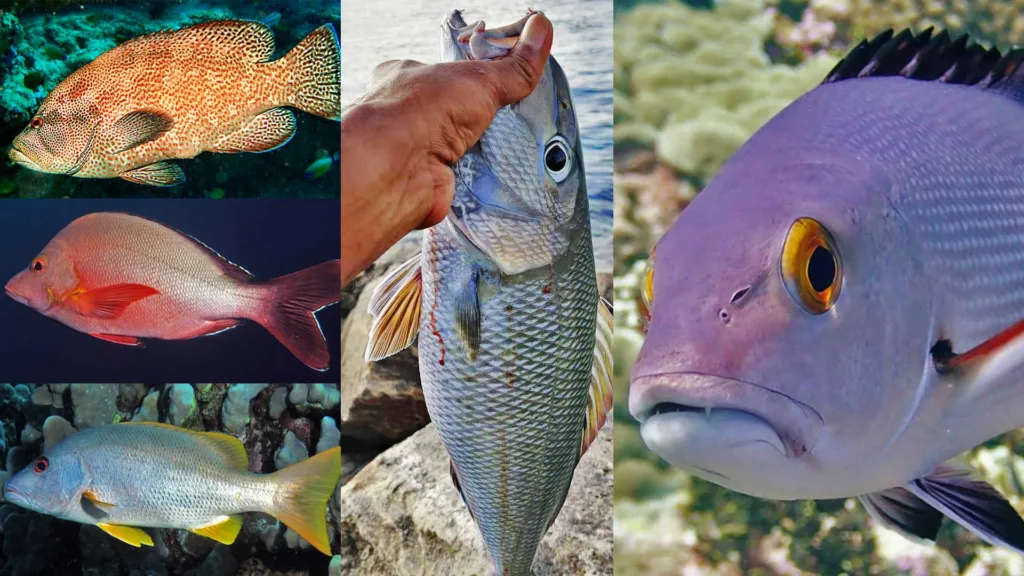
The diversity of species that live in the ocean is fascinating, and they all have unique abilities. Milkfish (Chanos chanos) is a distinct species that lives in Maldivian waters. When we were children, we learnt that this fish could live in both freshwater and saltwater. The most interesting thing we knew about this species was its strength and ability to jump out of the water. It is also found in two freshwater lakes on our island, Fuvahmulah.
In the early days, we had not noticed the presence of this fish in the freshwater lakes. However, when the island was flooded and the freshwater lakes overflowed, this fish was spotted along our island’s narrow roads and taro fields. It was among the fastest fish.
There’s another fascinating story about milkfish. During the early days, fishing on the reef flat of our island was a very common activity. In addition to using handlines and rods to catch fish, some fishermen used hand nets or cast nets. Normally, these specialised fishermen would use cast nets to target species like surgeonfish, parrotfish, and rudderfish. They also targeted large milkfish, known as ‘maabeyki’.

‘Maabeyki’ is typically three to five feet long. They can grow up to 180 cm (5 feet 11 inches). Casting the net for milkfish is extremely difficult. It required exceptional reflexes and patience. Any surface or water disturbances other than natural ones activate the senses of these versatile fish, causing them to dash through the shallow water on the reef flat.
Not all of the fishermen who used these nets were successful at catching milkfish. There were skilled men who threw the net into the exact spot where the milkfish was found. These fish don’t stay stationary in the water. They swim and wade through the reef flat. That made it a very challenging job. The specialist men had to be on high alert to find this fast-moving fish.
Normally, the water depth on the reef flat ranged from two to three feet. The daring fishermen wade through the water, walking and jumping against the splashing waves, looking for and locating this fish. When they see the signs of milkfish, like sudden waves on the surface followed by short bursts, they get ready. They knelt down, stalked, and prepared the nets for casting.
When the milkfish reach the fishermen’s territory – a radius of about five to ten feet – they cast the net over the swimming fish. As the net lands in the water, the milkfish jumps out, engulfed by the fishnet. Then fishermen would dash towards the net, grab the milkfish with both hands, and hug them. Sometimes the milkfish smashed the net and escaped, leaving the fishermen in despair. Milkfish was also caught using handline, and anglers now use artificial lures to land this fish with spinning rods and fly fishing.
The fisherman in the picture, Mohamed Niyaz, caught the milkfish on a handline while he and his partner were looking for snub-nosed rudder fish, which are locally known as kirulhiyamas. This fish was caught on a 25-pound monofilament line. The hook size was 13, and the bait used was a piece of bread.




